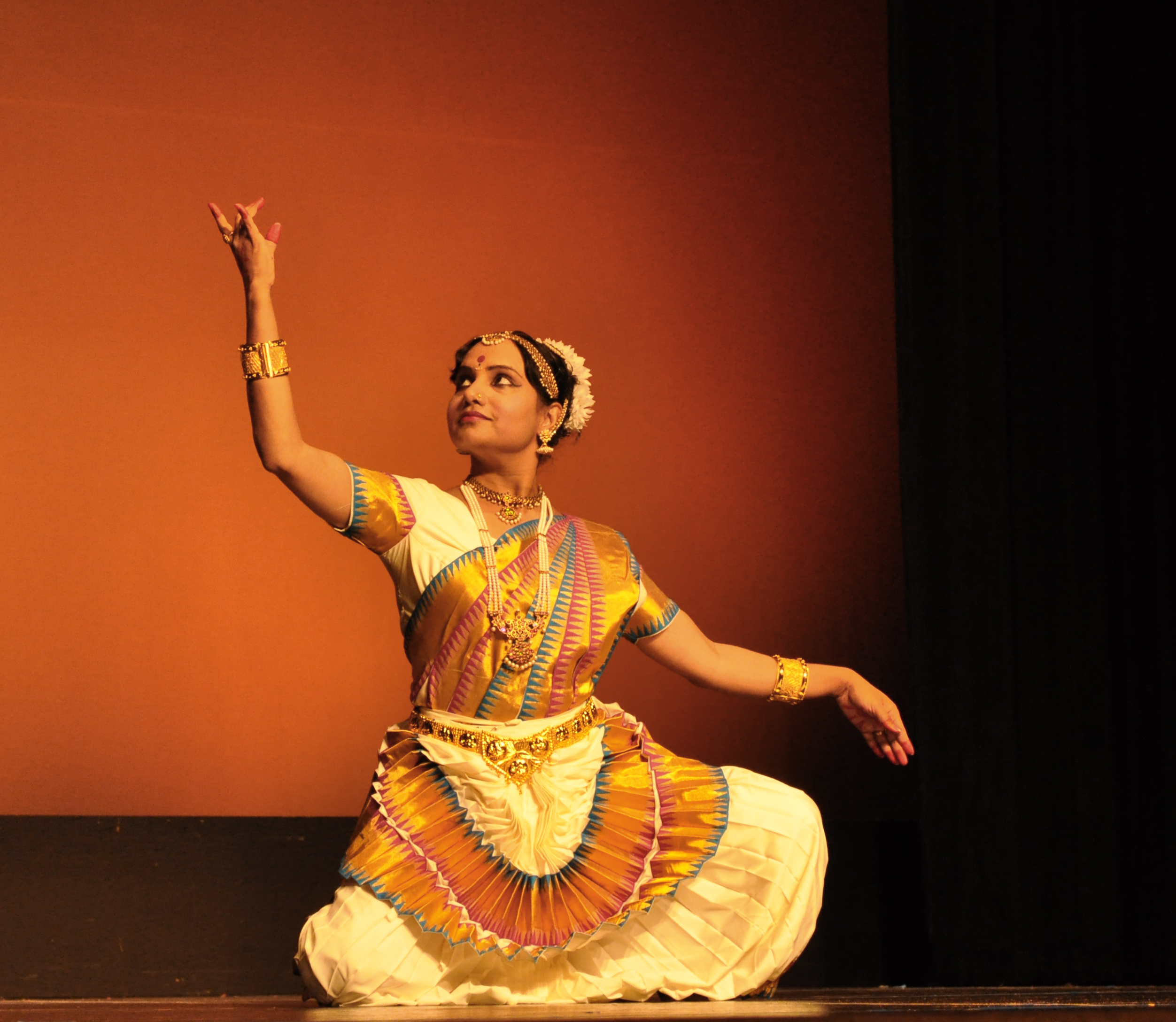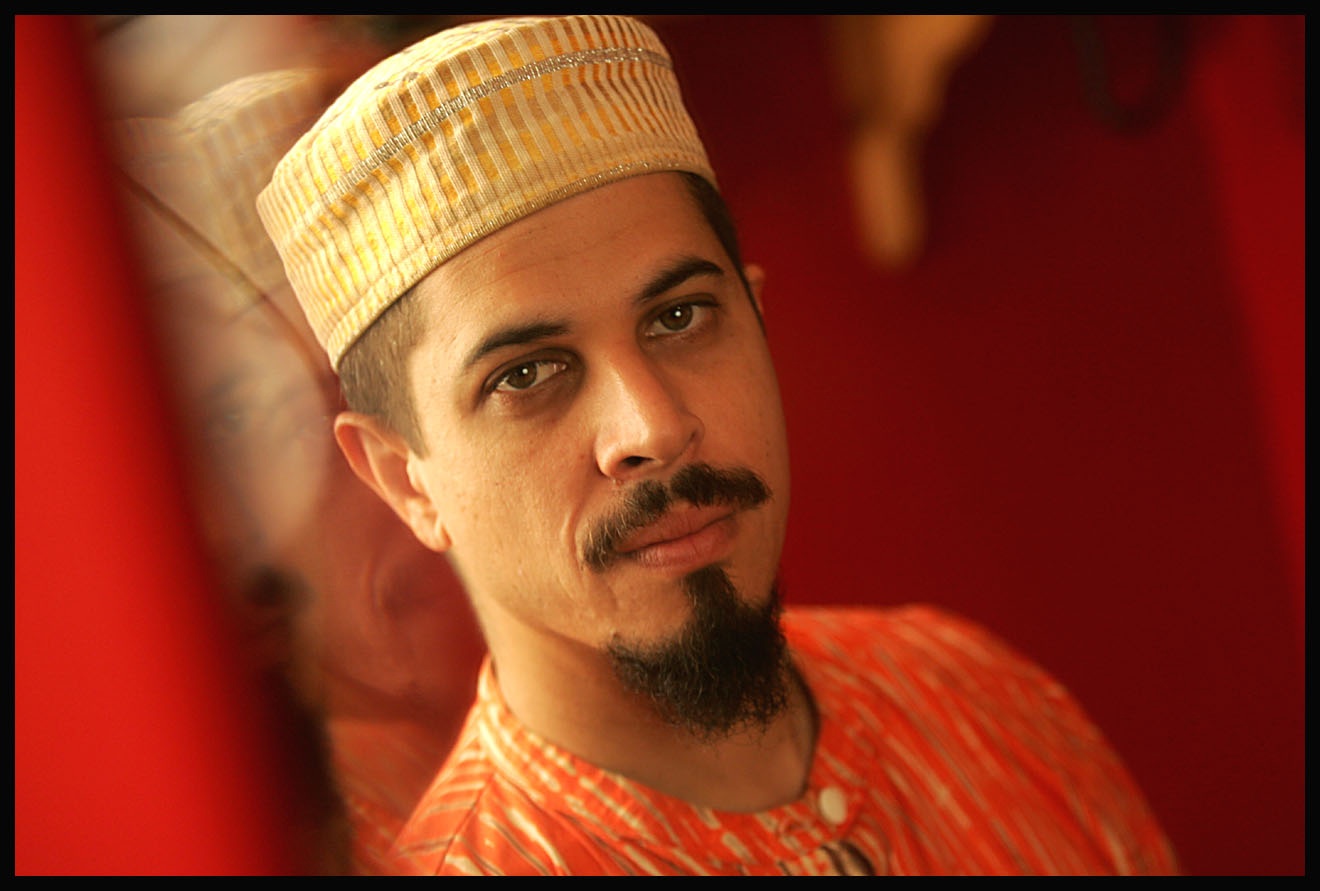
Indian classical dance–to the rhythms of poetry and Afro-Cuban spirits
Photo provided by the Miami Book Fair.
This post has been updated to reflect that the Center for Writing and Literature at Miami Dade College no longer exists; Miami Book Fair has assumed those responsibilities.
In the crossroads that is South Florida, cultural differences seem readily apparent. Yet if you listen closely, the echoes and similarities between the stories we tell ourselves to make sense of the world around us speak of something else. Just ask Ranjana Warier.
A senior security systems engineer for Miami-Dade County by day, Warier is also an Indian classical dancer, choreographer, artistic director of Rhythms School of Dance in South Florida and, by necessity, cultural translator. Bringing a tradition that is thousands of years old, rooted in sacred ritual and religious theater to audiences living half a world away, unfamiliar with its history and aesthetics, would seem to pose insurmountable challenges. Not quite. And as it turns out, it also brings surprising discoveries.
In “Surya: The Eternal Rhythm,” Warier’s most recent production, winner of a Knight Arts Challenge award, she translated into movement the words of Miami-born poet, writer and multidisciplinary artist Adrian Castro. Adding to the challenge, Castro is also a “babalawo,” an elder in the Afro-Cuban Orisha religion generally known as Santería, and for this piece, Warier worked with a selection of unpublished poems with a distinct spiritual content.

Ranjana Warier. Photo by the Miami Book Fair.
“It took a few iterations for me to get it the way I wanted,” said Warier in a recent interview. “His poetry is very spiritual in nature; it has a lot of symbolism, so the creative process here wasn’t a straightforward process like taking a story and interpreting it. Translating all that symbolism into my background and my culture, trying to connect things, had a lot of dimensions. If you look at the deities in the Orisha religion, there a lot of similarities [with the Hindu pantheon]. Even the stories have a lot of similarities in both cultures, like the story of Ochún, the beautiful, seductive goddess of love, and Changó, the warrior. It was very educational for me.”
The collaboration premiered at the Miramar Cultural Center in January. A second, shorter performance, “The Making of Surya: The Eternal Rhythm,” followed by a Q&A with Warier and Castro will take place at Miami-Dade College’s Wolfson Campus Auditorium at 4 p.m. Saturday, April 2. The event is part of National Poetry Month.
The performance will feature both recorded and live music (including an Indian ensemble, comprising three percussionists, violin and voice, and an Afro-Cuban batá group) as well as Ifé-Ilé, a Miami-based Afro-Cuban dance group that’s also a Knight Arts Challenge winner. The Center for Writing and Literature at Miami Dade College played a key role bringing together Warier and Castro. The center no longer exists and its functions have been assumed by Miami Book Fair, which is a partner in the project. Miami Book Fair maintains Poetry Dance, a site dedicated to “Surya: The Eternal Rhythm.”
“This show was quite different from what we usually do,” said Warier. “But the trick is, as always, to keep it entertaining yet educational. The performance at the Miami-Dade College campus will be very different from the first show. It is not just a repeat.”
While Castro was not part of the process of developing the choreography for his texts —“ I gave Ranjana several poems; she selected a few and then she would ask questions. My role was almost editorial,” he said — he is part of the performance, offering an opening invocation and also a reading of some of his poems.

Adrian Castro. Photo by Pedro Portal.
“These poems are not about the [Orisha deities] per se, but more archetypal, about an inward journey, a meditative inward process,” he said. Watching Warier’s translation of those poems into movement “was for me riveting. She had both their students and professional dancers and I was enthralled.”
Warier’s efforts to bring Indian classical dance to new audiences include productions such as “Festivals of India” (2010) and “Once Upon a Time: An Adaptation of Western Fairy Tales Through Indian Dances” (2012). Also a 2012 Knight Arts Challenge winner, to “promote cross-cultural understanding by showcasing Indian classical dances through adaptations of Western fairy tales,” Warier organized “From Bharatanatyam to Bollywood — The Journey of Indian Dance,” a one-hour presentation at Nova Southeastern University in May 2013, and then, in collaboration with five Indian dance schools in Florida, “Anvita,” a reinterpretation of the classic fairy tale “Sleeping Beauty,” set to Indian classical dance. Castro´s poetry represented a different challenge.
“The whole show was created from interpreting Adrian’s poetry in which he speaks of clay, chalk and charcoal, which he represents with red, white and black,” she said. “So I started connecting it with my background. There’s symbolism in those colors, there are a lot of emotions attached to that and it reminded me of morning, day and night. He spoke about the innocence of the creation, white; the process of transformation, red; and the product being black, the charcoal. It reminded me of creation, sustenance and dissolution from our Indian mythology and led me to Surya, the sun god or supreme being in Hindu mythology.
“The energy of the sun, the eternal rhythm, creates, sustains and eventually dissolves life on earth. We may look different, we may dress different, we may speak different but inside we are all the same — we just have to dig a little deeper.”
Fernando González is a Miami-based arts and culture writer. He can be reached via email at [email protected]
“The Making of Surya: The Eternal Rhythm” takes place at 4 p.m. Saturday, April 2, at the Miami Dade College Wolfson Campus Auditorium. Visit poetrydance.com for more information and tickets.
Recent Content
-
Artsarticle ·
-
Artsarticle ·
-
Artsarticle ·

